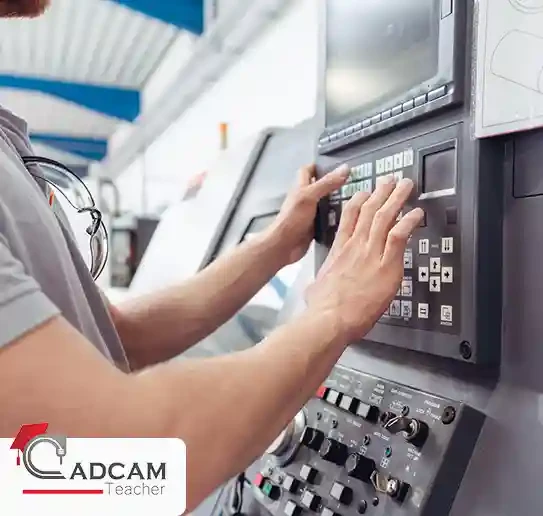-
 Call Now ! +971503930741
Call Now ! +971503930741 -
 Contact Email info@cadcamteacher.com
Contact Email info@cadcamteacher.com

CNC programming is an essential skill for anyone interested in manufacturing and machining. For beginners, learning CNC programming can open doors to numerous career opportunities, especially in a rapidly developing market like Saudi Arabia. The CNC programming for beginners guide is designed to help them understand the basics of CNC programming and how to get started in this field.
CNC programming involves creating step-by-step instructions for CNC machines to control the movement of a cutting tool on raw material. This allows you to manufacture precise and complex parts based on your desired design. CNC programming is a highly sought-after skill in the manufacturing industry and can open doors to rewarding career opportunities.
Key terms to understand:
CNC Machine: A computer-controlled machine that executes specific instructions to perform various manufacturing processes like drilling, milling, and turning.
CAM Software: (Computer-Aided Manufacturing) software that helps you create CNC toolpaths and convert digital designs into machine-executable instructions.
G-code: The programming language used to communicate with CNC machines and provide them with the necessary instructions for movement and operation.
Before diving into CNC programming for beginners, it’s important to understand the basics:
G-code is the most common CNC programming language used, which controls the movement and operation of CNC machines. It’s crucial to learn the structure and syntax of G-code as a foundation.
Types of CNC programming can be divided into manual programming, conversational programming, and CAM (Computer-Aided Manufacturing) software programming. Each has its own unique applications, and beginners should start with the type that best suits their needs and goals.
Access a free comprehensive guide to learn CAD CAM.
As a beginner, it's essential to start with simple projects and gradually increase the complexity. Here are some tips to get you started:
Begin with Basic Shapes: Start by practicing simple shapes like cubes, cylinders, and spheres.
Understand G-code Commands: Familiarize yourself with common G-code commands used for movement, tool changes, and spindle control.
Practice regularly: Consistent practice is key to mastering CNC programming.
Seek Guidance: Don't hesitate to ask for help from experienced CNC programmers or join online communities.
Book now
CNC Mill Programming - Siemens
CADCAM teacher academy provid alot of available sources for learning cnc programming for both beginners and experts through:
Online Courses: CADCAM Teacher offers courses specifically designed for beginners. These courses cover everything from the basics of CNC programming to advanced techniques.
CNC programming simulation: We Use the most advanced CNC simulation software to practice your programming skills without the need for a physical machine.
Tutorials and Videos: Our YouTube channel has become an invaluable resource for learning various technical skills, we offer a large collection of tutorials and videos that provide students with valuable insights.
Finally, With the right guidance, such as online courses from CADCAM Teacher, you can confidently step into the world of CNC programming for beginners and start building your expertise. Contact us now.
read more
cnc programming certification course online